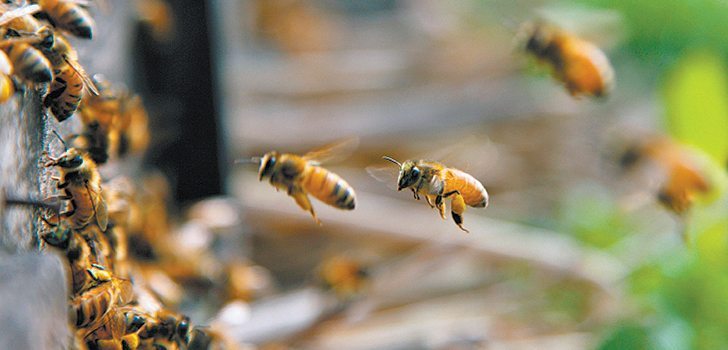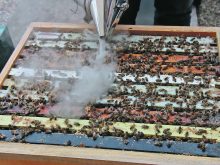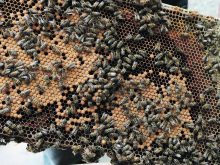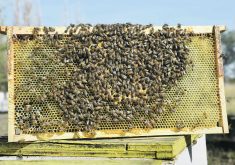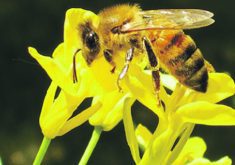The opening line of an article posted on CBC News’s website last May summarized a commonly held belief about honeybees:
“The collapse of bee colonies nationwide (in Canada) is well-established and beyond dispute.”
A provocative lead, but not true.
Statistics Canada data shows that honeybee colony numbers have increased steadily from 637,920 colonies in 2011 to 667,397 in 2013 and 721,106 in 2015.
Yet many media outlets use words such as “endangered,” “at risk” and “near extinction” to characterize the plight of honeybees.
Jim Coneybeare, vice-president of the Ontario Beekeepers’ Association, said media rhetoric can be excessive.
Read Also

Farming Smarter receives financial boost from Alberta government for potato research
Farming Smarter near Lethbridge got a boost to its research equipment, thanks to the Alberta government’s increase in funding for research associations.
“I don’t think ‘endangered’ is the right terminology,” he said.
“(But) within Ontario I think it would be correct in saying that the situation puts a great stress on honeybees and the beekeepers.”
Coneybeare said bee colony health declined in Ontario after neonicotinoid seed treatments became standard practice for corn and soybean growers, but Ontario isn’t Canada.
“I think things need to be clarified,” said Coneybeare, who represents the OBA on the Canadian Honey Council.
“It’s important that people realize that the West hasn’t seen Ontario’s situation…. We’re a big country and there are huge differences between East and West.”
Honey council chair Kevin Nixon said journalists have been reluctant to report that Canada’s beekeeping industry is prospering.
“Over the last couple of years there have been times where we tried getting that message out … but it didn’t seem to get picked up,” said Nixon, a beekeeper from Innisfail, Alta.
“The general public isn’t made aware of these good news stories. The industry is growing and is thriving.”
Honey council executive director Rod Scarlett was more direct in his criticism. He’s seen dozens of reports on Canada’s “bee apocalypse,” and the stories are irritating.
“Ultimately I think it’s the press’s responsibility to get the facts right…. In general, they have done an awful job of getting factual information,” he said.
“If they don’t do the work to follow up and make sure the articles they’re presenting are correct, we don’t have the time or manpower to go out and correct everybody’s article.”
The media coverage has convinced many Canadians that bees are in serious trouble. Most articles say neonicotinoids, an insecticide applied to canola, corn and soybean seed, are responsible for honeybee deaths and colony losses and are putting pollinators in jeopardy.
Nixon said the reports stoke conflict between beekeepers and crop producers, harming what should be a positive relationship between the two sectors.
It can be argued that the Ontario Beekeepers’ Association has provoked some of the friction between honey producers and farmers. It lobbied against neonicotinoids, and its efforts may have helped convince the Ontario government to impose neonic restrictions. By 2017, corn and soybean growers will have to prove they need neonics to control crop pests. If not, they cannot use neonic seed treatments.
Coneybeare said the OBA’s position on neonics is a source of disagreement within the national honey council, but neonics are just one of many issues facing the beekeeping sector.
“There are many, many things … that are common across the country,” he said.
“It’s definitely important that we maintain a national membership…. Sometimes certain issues get painted with a broad paintbrush and that’s where we run into problems.”
The CBC story from May can be viewed at www.cbc.ca/news/canada/bee-killing-pesticides-the-fight-ramps-up-1.3075620
National honey production hit a low in the late 2000s but has rebounded over the last seven years:
Honey (millions of lb.)
2008 64.9
2010 81.7
2012 90.8
2014 85.5
2015 95.3*
* Second highest total in last 15 years
Source: Statistics Canada
robert.arnason@producer.com




